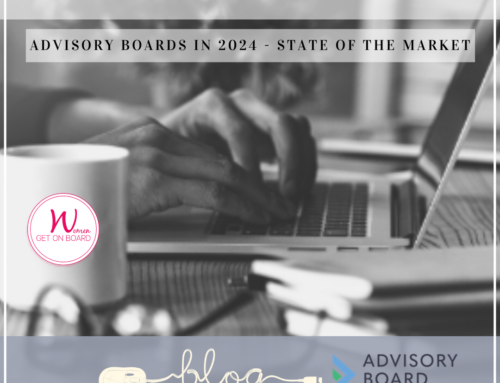On an evening that saw Toronto flush with rain and Raptor’s pride, the Governance Professionals of Canada (GPC) partnered with Women Get On Board (WGOB) for engaging conversations on Board Diversity – Are You an Agent of Change?
WGOB’s Founder & CEO Deborah Rosati moderated the conversation with panelists George Horhota, Co-founder, The Brockton and Director, Community Trust Company; Ekta Mendhi, Senior Director, Corporate Strategy, CIBC and Co-Chair of the Canadian Gender and Good Governance Alliance and Marian Walsh, Chair, Governance and Human Resources Committee, Board of Medavie.
From defining diversity to championing its necessity, the panelists provided an insightful discussion on the many ways business leaders can advance their board diversity mandate.
1. What does board diversity mean to your company/organization in terms of commitment and needs?
According to the Canadian Gender and Good Governance Alliance’s ‘Director’s Playbook’ (an organization which Mendhi co-chairs), “several studies demonstrate that organizations experience the greatest benefits of diversity when they have between 40% and 60% female representation at all levels.”
The panelists addressed what is currently lacking in the board renewal process and detailed what has been done or should be done to find practical solutions to increase diversity on boards. In terms of a present board ‘need,’ Horhota stated, “I think the board should reflect the diversity of the customer and their employees, regardless of what industry they are in.” He added that this school of thought is not currently in practice for boards across Canada and beyond, despite being a necessity for both customers and employees to feel like they are adequately represented.”
Both Mendhi and Walsh shared his sentiment, with Mendhi adding that it then becomes a talent pool issue. If those decision-makers in charge of identifying board talent continue to allow the same small group of individuals to serve on a board, then companies and organizations will be challenged to advance board diversity.
Shifting the focus to what board diversity commitments are being made by the companies/organizations that the panelists belong to, Walsh noted that Medavie is committed to having a diverse company with a multitude of skill sets and recognizes that those skill sets come from individuals with different gender, geographic location, age, ethnicity and culture.
2. What board renewal mechanisms do you have in place or that you would advocate for change? (eg. age limits, term limits?)
Walsh stated that introducing term limits was one way her company was able to implement change, calling it a “matter of strategic importance.” To keep a board that is fresh and represents the majority versus the minority, Medavie recognized that turnover of the board is a good governance practice and critical to the foundation of their overall business model.
The panelists agreed on the importance of setting age limits, as it opens board seats to add younger cohorts, which often results in new or fresh ways of approaching how a company or organization is run.
3. Describe how you or your company/organization are an Agent of Change (give examples) in advancing board diversity?
When it comes to being an agent of change, companies/organizations need to embrace board diversity as part of their culture. The panelists agreed that significant importance needs to be placed on how companies and organizations go about finding board candidates.
Mendhi suggested using peers, networking organizations and executive search firms as a source of finding diverse board candidates and expanding the potential talent pool.
Walsh revealed that every time a board seat becomes vacant at Medavie, the company requires that its board competency matrix is met by searching for candidates that represent diversity from gender, geographic, age, ethnicity and culture.
It is not enough to discuss how a company or organization can be an agent of change – there needs to be champions within to make it happen. Whether this is a Chief Diversity & Inclusion leader or senior business leaders that champion the company’s goals to catalyze change.
4. Are there other companies/organizations or countries that you think are good examples that are advancing the board diversity mandate?
The panelists agreed that it is essential that other companies, organizations and even countries get involved.
Mendhi was quick to acknowledge the Canadian Gender and Good Governance Alliance, in particular, the Canadian Coalition for Good Governance (CCGG), which defines itself as “the preeminent corporate governance organization in Canada uniquely positioned to effect change as the voice of institutional shareholders that invest in Canadian public equities.” The CCGG advocates for business leaders to commit to diversifying their boards.
Horhota pointed out that many institutional investors are also becoming agents of change as they take steps to vet potential board candidates to make sure there are diverse board candidates on the slate.
Walsh noted that as new board members are on-boarded, it is essential that they become advocates for advancing the board diversity mandate. All panelists agreed; this is a vital step to ensure diversity is incorporated into the board culture.
Women Get On Board is a leading member-based company that connects, promotes and empowers women to corporate boards. We do this through an engaged community of women and men in Canada committed to advancing gender diversity in the boardroom. Find out more about becoming a member of Women Get On Board.





